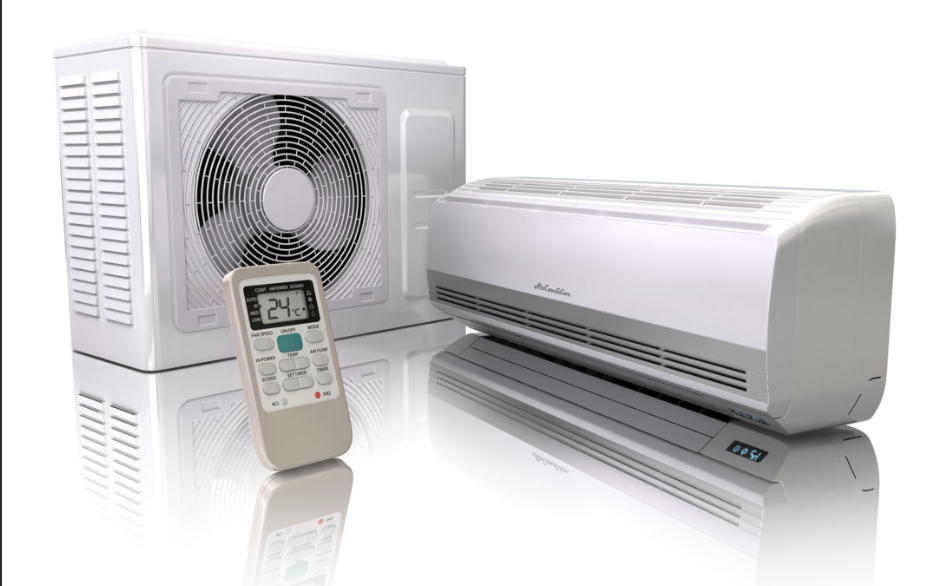NEWS
Exploring the Benefits of Mini Split HVAC System

Heating, ventilation, and air conditioning (HVAC) systems provide comfort and optimal indoor air quality in homes and commercial spaces. Mini-split systems have gained significant popularity among the various types of HVAC systems available in recent years.
These compact and versatile systems offer several unique benefits, making them a preferred choice for many homeowners and businesses. We will delve into the world of mini-split HVAC systems, exploring their advantages and how they can revolutionize the way we experience heating and cooling.
What Are Mini Split HVAC Systems?
Mini-split HVAC systems are air conditioning and heating systems that consist of an outdoor unit and one or more indoor units. The outdoor unit is installed outside the home, and the indoor units are installed in the rooms you want to cool or heat.
The systems are a popular choice for homes that do not have ductwork or rooms that are difficult to cool or heat with a traditional central air conditioning system.
The Working Mechanisms
Mini-split systems transfer heat from the indoor unit to the outdoor unit. The indoor unit absorbs heat from the air in the room, and the outdoor unit releases that heat to the outside air. This process is reversed in the winter when the outdoor unit absorbs heat from the outside air, and the indoor unit releases that heat into the room.
Mini-split systems can save you up to 30% on energy bills compared to traditional central air conditioning systems. Mini-split systems are also very quiet and do not require any ductwork, which can save you money on installation costs.
Different Types of Mini Split HVAC Systems for Your Home
Below are different types of mini-split HVAC systems.
- Single-zone mini-split system: Consists of one indoor unit connected to one outdoor unit. It’s designed to heat or cool a single room or zone.
- Multi-zone mini-split system: Consists of one outdoor unit connected to multiple indoor units.
- Ceiling cassette mini-split system: Systems are designed to be mounted in the ceiling, providing a more discreet and aesthetically pleasing option.
- Floor-mounted mini-split system: They are installed near the floor, making them suitable for spaces where wall or ceiling installation is impractical.
- Wall-mounted mini-split system: They are installed high on a wall and are often used in bedrooms, living rooms, and offices.
- Portable mini-split system: They typically come with wheels for easy relocation and are often used in small spaces or temporary living situations.
- Hybrid mini-split system: They offer heating and cooling capabilities, making them versatile for year-round use. These systems are equipped with a heat pump that can reverse the refrigeration cycle to provide either heating or cooling as needed.
Advantages of Mini Split HVAC Systems Over Traditional Systems
Here are some advantages of mini-split HVAC systems:
- More energy efficient: Mini-splits only cool or heat the needed space. This leads to significant energy savings.
- Quiet operation: The indoor units operate very quietly. This makes them great for bedrooms and living spaces.
- Individual zone control: Each indoor unit can be controlled independently to maintain the desired temperature in each room or zone.
- Flexible installation: Since there is no ductwork, the indoor units can be installed in almost any location and configuration to fit your space.
- Improved air quality: Mini splits provide filtered air exchange and reduce humidity, improving indoor air quality compared to older systems.
- Easy to maintain: With few mechanical parts, no ducts to clean, and access to filters behind easily removable panels, mini-split systems require far less maintenance than central forced air systems.
- Long lifespan: Quality mini split systems are built to last over 15-20
Tips to Keep Your Mini Split HVAC System Running Smoothly
Maintaining your mini-split HVAC system will ensure it runs smoothly and extend its life expectancy. Here are some tips:
- Clean the filters: The filters should be cleaned every month. Dust and debris can clog the filters and reduce the system’s performance.
- Check the outdoor unit: Make sure the outdoor unit is free of debris and that nothing is blocking the airflow. During winter, clear any accumulated snow or ice.
- Professional inspection: Even with regular cleaning, having a professional HVAC technician inspect your system at least once a year is a good idea. They can check for issues like refrigerant leaks or electrical problems that you might not be able to identify independently.
- Check the drain line: Make sure the drain line is not clogged. If it is, it could cause water to back up into the system and potentially cause damage.
- Regular use: Regular use can keep your system running smoothly. Letting a system sit idle for too long can cause it to seize up, while regular use can keep parts lubricated and working well.
- Protect the outdoor unit: Consider installing a protective covering or shelter for the outdoor unit to protect it from harsh weather conditions.
Summary
Mini-split systems are a very efficient way to heat and cool your home. There is no need to spend your bucks on traditional options for air conditioning. Upgrade to a mini-split HVAC system from a reliable partner and experience the ultimate comfort and energy efficiency.
Harper Harrison is a reporter for The Hear UP. Harper got an internship at the NPR and worked as a reporter and producer. harper has also worked as a reporter for the Medium. Harper covers health and science for The Hear UP.










